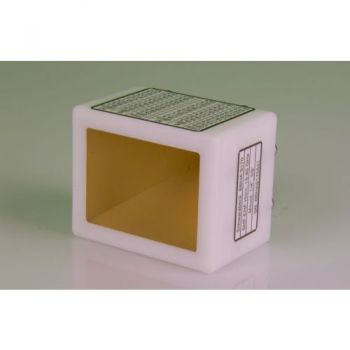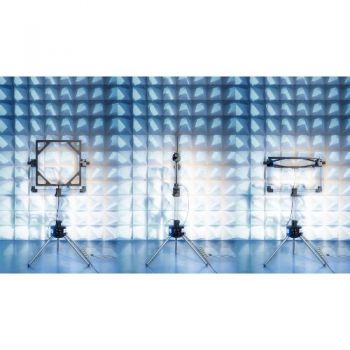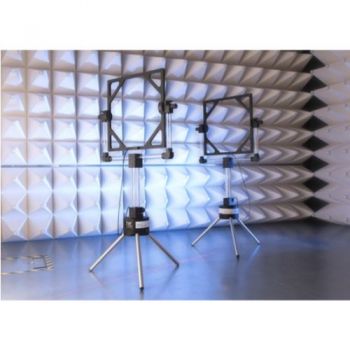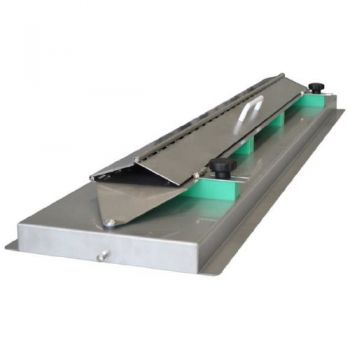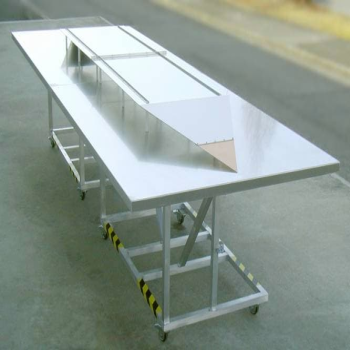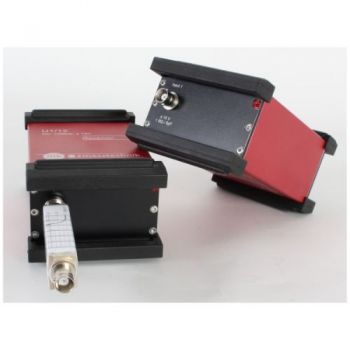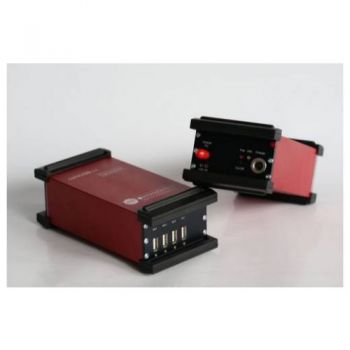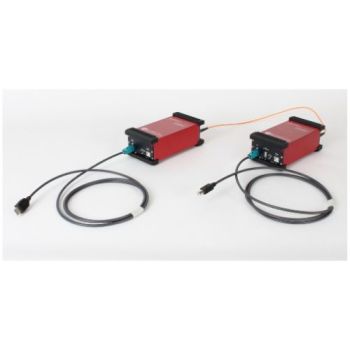Products
Broad-Band Horn Antenna
- 15 - 26.5 (40) GHz
- SMA-compatible connector
Stacked Logarithmic-Periodic Broadband Antenna for Linear polarised RX- and TX- applications in the microwave frequency range. The antenna structure is made of laser-cut brass. For the protection of the fine antenna structure against damage, the antenna is equipped with a low loss plastic protection cover. The STLP 9149 is especially suitable for Immunity Testing acc. to IEC 61000-4-3 because of its good field uniformity.
- (0.6)0.7-9 (10.5) GHz
- Gain 10.3 dBi +/- 1.5 dBi
- Type N female
The Precision Omnidirectional Dipoles POD 16 and POD 618 are fully compliant to CISPR 16-1-4 for site validation above 1 GHz. The POD 16 and POD 618 are precision broadband dipole antennas with conically shaped radiation elements covered by an RF-transparent radome. This rugged construction enables an excellent dipole-like radiation pattern up to 18 GHz.
Precision Loop Antenna The PLA-R antenna is an active, battery-powered loop antenna for fully compliant radiated disturbance measurements. Due to the broad frequency range from 9 kHz to 30 MHz, it is suitable for all emission standards. A very low noise floor allows for compliance measurements with low limits. Furthermore, the passive operation mode ensures that strong emissions e.g. from wireless charging applications don't overload the preamplifier. With the integrated tripod, positioning is convenient and fast as the loop antenna needs to be oriented in x, y, and z orientation. Two integrated laser pointers support the alignment.
The PLA set consists of two active, battery powered loop antennas intended for site validation. With the broad frequency range from 9 kHz to 30 MHz it is suitable for Normalized Site Attenuation (NSA) measurements and Shielding Effectiveness (SE) measurements.
The coupling clamp CDN 2012 conforms exactly to the requirements of ISO 7637-3 and other standards, guaranteeing that tests are carried out in strict compliance with the standard. The CDN allows the fast nanosecond pulse bursts ( ISO 3a and 3b) to be injected in cable runs. Very high impedance signal lines are also to be found in vehicles on which the disruptive effects of ISO pulses 1 and 2 can also show up through capacitive coupling.
- Immunity tests on automotive devices to ISO 11452-5 and SAE J1113-23.
- Use in ordinary facilities. No Chamber required
- Available in 50 and 90 ohm versions
- DC to 1 GHz range
These measuring systems are used for the optical, digital transmission of analog signals:
- With a resolution of 8 Bit
- maximal analog bandwidth of 50 MHz.
The optoUSB-2.0 system can be used for the optical transmission of USB-signals up to a data rate of 480 Mbit/s according to USB2.0. It can be used to transmit USB-signals over long distances or to handle ground potential problems. With the optical transmission and the shielded case, the system is well equipped for EMI and EME tests.
- optoUSB2.0 USB hub with 4 USB ports (not as EMI robust as -RBRIR version)
- optoUSB2.0-RBDIR uses a Rosenberger connector which has been proven to be more EMI robust)
- optoUSB3.0 USB hub with 2 USB ports (not as EMI robust as 2.0-RBRIR version)
The optoUSB-2.0-RBDIR system can be used for the optical transmission of USB-signals up to a data rate of 480 Mbit/s according to USB2.0. It can be used to transmit USB-signals over long distances or to handle ground potential problems. With the optical transmission and the shielded case, the system is well equipped for EMI and EME tests.
- optoUSB2.0-RBDIR uses a Rosenberger connector which has been proven to be more EMI robust)
- optoUSB2.0 USB hub with 4 USB ports (not as EMI robust as -RBRIR version)
- optoUSB3.0 USB hub with 2 USB ports (not as EMI robust as 2.0-RBRIR version)

